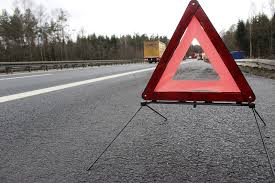6 July 2023
Car Traps
And what to do about them.
By Robert Kilconner
As Ned Ludd could have told you, progress is not always a good thing. In his case, of course, the concern was that the introduction of machinery would cost jobs – a cost borne by those on the supply side. Nowadays, however, the damage is often suffered by the consumer and for the motorist this becomes more evident every day.
Let us suppose you are driving down one of the new smart motorways. It is all terribly clever and camera technology speeds the flow by making sure that all parts of the carriageway are used to capacity. So far, so good, but suddenly you hear a nasty noise from the engine and black smoke begins to come from under the bonnet. Unfortunately you have just passed an emergency bay and cannot make it to the next one. No hard shoulder, so you have to stop amid the traffic. You would like to open the boot to put out a warning triangle but with cars zooming past on both sides you decide to sit in your vehicle and hope that the cameras spot you. Anyone who runs security cameras will tell you that they often go wrong or maybe the man operating them is a bit sleepy after a heavy night. Splat! The driver of a heavy lorry isn’t paying enough attention and you join the bugs on his radiator.
Common sense should have told the experts that this is not a good system but they got carried away with the technology, leaving it to pressure from the general public, who always prefer common sense to science and maths, to re-establish sanity. There won’t be any more smart motorways but the existing ones remain. Moral: do not drive a dodgy car on a smart motorway unless you are an enthusiast for Russian roulette. Solution: get rid of the remaining smart motorways as quickly as possible
Another of these technologically-inspired hazards is the spare wheel trap. You are driving around your local town and someone steps out from the curb. In order to avoid them you have to steer into the curb yourself and “whoosh”, down goes the front tyre. “Never mind” you say, “let’s pop the spare on”. That’s a good idea in principle but will only work if there is a spare. Instead there is a tube of gluey substance which can deal with relatively minor punctures but not a full out burst. You wait confidently for the AA but alas, as so often happens, the impact has bent the wheel so a new tyre cannot be fitted. Fine if you had a spare wheel, of course. But you haven’t. Car dragged away on a tow truck and you are told that a new wheel will be required from a specialist provider. Three weeks later… Thank God it was in Islington not in Kathmandu. Moral: do not buy a car that does not carry a spare wheel. Solution: the market should sort this one out.
Then there is the electric car trap. You are fond of fishing in Scotland and find it well worth the ten-hour road journey to get to your favourite river. Then you buy an electric car – quicker and more efficient, the salesman told you – but the journey has suddenly got longer because you have to sit around while the battery is recharged every few hundred miles. Moral: do not buy an electric car if you’re doing long distances.
The solution here is an old one going back to centuries before cars were invented. If you wished to travel across England in your carriage in the old days you could not expect your horses to gallop along indefinitely. A horse like an engine runs on fuel (in this case oats; the editors can take no responsibility for those who give their horses petrol to drink) but they also have to be rested and if you did not wish to sit with your feet up while your team enjoyed some well deserved R&R, you had to periodically swap your horses for a fresh team at the mediaeval equivalent of a filling station. That is the obvious system for the electric car and hopefully, before long, one of the big manufacturers will set up a network of stations where you can exchange your half-empty battery for a full one, paying the cost of the electricity you gain as you do so. That would of course involve using a standardised battery across their range and a considerable capital investment in spares. Nonetheless it would give a huge marketing advantage and sooner or later someone will do it. Meanwhile the government could perhaps give a helping hand by reducing car tax for those makes whose batteries are of a standard shape. Solution then: to introduce regulations standardising batteries.


